Physical Address
304 North Cardinal St.
Dorchester Center, MA 02124
Precise knowledge of the architecture of the liver, biliary tract, and pancreas and the related blood vessels and lymphatic drainage is essential for the successful performance of hepatopancreaticobiliary surgical operations.
The liver lies protected under the lower ribs, closely applied to the undersurface of the diaphragm and on top of the inferior vena cava (IVC) posteriorly ( Fig. 2.1 ). Most of the liver bulk lies to the right of the midline, where the lower border lies near the right costal margin. The liver extends as a wedge to the left of the midline, between the anterior surface of the stomach and the left dome of the diaphragm. The upper surface is boldly convex and molded to the diaphragm, and the surface projection on the anterior body wall extends up to the fourth intercostal space on the right and to the fifth intercostal space on the left. The convexity of the upper surface slopes down to a posterior surface that is triangular in outline. The liver is invested with peritoneum except on the posterior surface, where the peritoneum reflects onto the diaphragm, forming the right and left triangular ligaments. The undersurface of the liver is concave and extends down to a sharp anterior border. The posterior surface of the liver is triangular in outline with its base to the right, and here the liver lying between the upper and lower “leaves” of the triangular ligaments is bare and devoid of peritoneum. The peritoneum reflects onto the right posterior liver from the medial aspect of Gerota’s fascia, which is associated with the right kidney. The right adrenal gland lies beneath this reflection. The anterior border of the liver lies under cover of the right costal margin, lateral to the right rectus abdominis muscle, but it slopes upward to the left across the epigastrium. Anteriorly, the convex surface of the liver lies against the concavity of the diaphragm and is attached to it by the falciform ligament, left triangular ligament, and upper layer of the right triangular ligament.
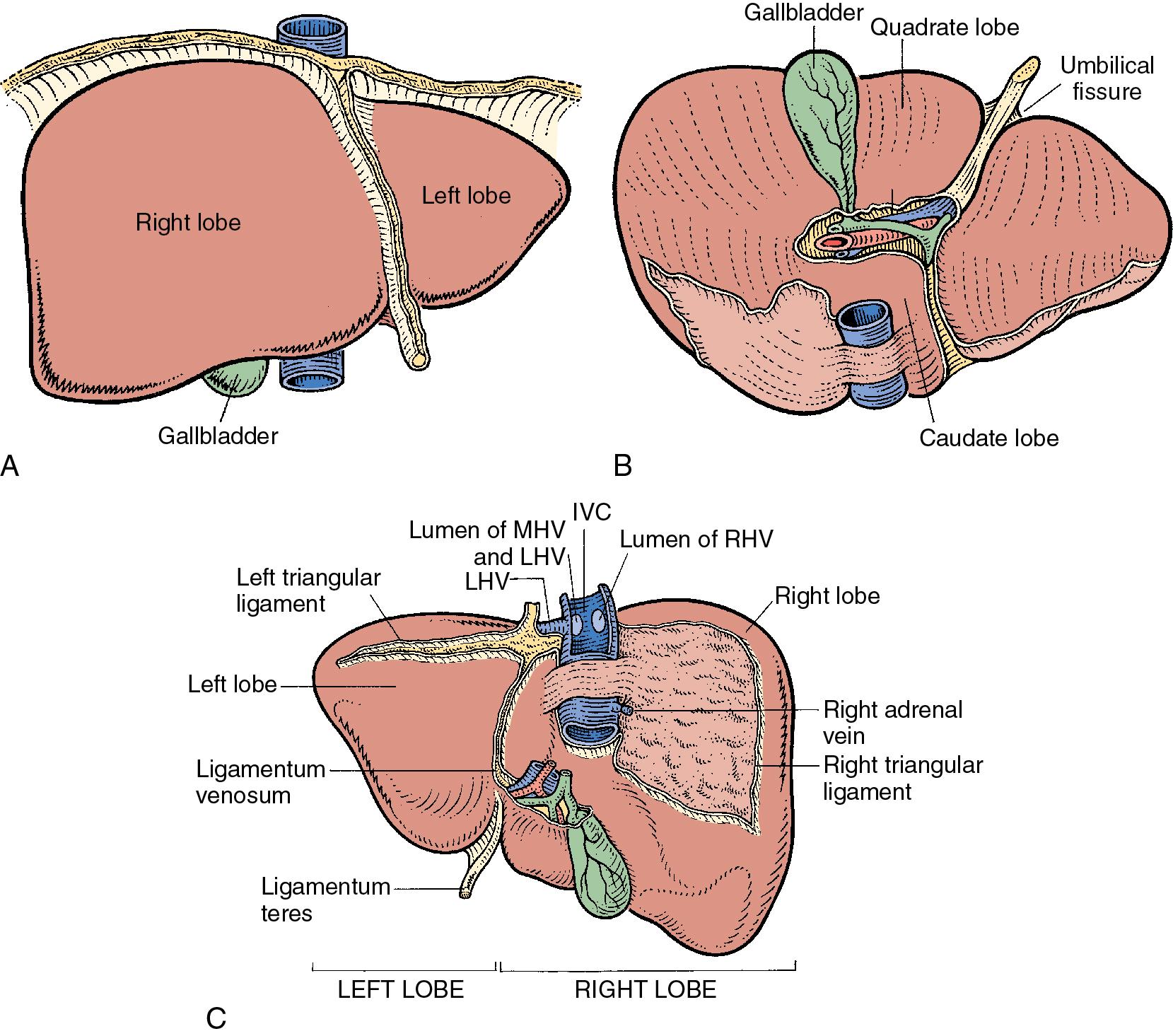
The IVC runs to the right of the aorta on the bodies of the lumbar vertebrae, diverging from the aorta as it passes upward. Below the liver, the IVC lies behind the duodenum and head of the pancreas as a retroperitoneal structure passing upward behind the foramen of Winslow posterior to the right hilar structures of the liver. The renal veins lie in front of the arteries and join the IVC at almost a right angle on the left and obliquely on the right. The IVC is embraced in a groove on the posterior surface of the liver. The IVC comes to lie on the right crus of the diaphragm, behind the bare area of the liver; it extends to the central tendon of the diaphragm, which it pierces on a level with the body of T8, behind and higher than the beginning of the abdominal aorta. While the IVC courses upward, it is separated from the right crus of the diaphragm by the right celiac ganglion and, higher up, by the right phrenic artery. The right adrenal vein is a short vessel that enters the IVC behind the bare area. There may be a small accessory right adrenal vein on the right that enters into the confluence of the right renal vein and the IVC. Also, occasionally, a right adrenal vein drains directly into the posterior liver. The lumbar veins drain posterolaterally into the IVC below the level of the renal veins, but above this level, there are usually no vena caval tributaries posteriorly.
The hepatic veins ( Figs. 2.2–2.4 ) drain directly from the upper part of the posterior surface of the liver at an oblique angle directly into the vena cava. The right hepatic vein, which is larger than the left and middle hepatic veins, has a short extrahepatic course of approximately 1 to 2 cm. The left and middle hepatic veins may drain separately into the IVC but are usually joined, after a short extrahepatic course, to form a common venous channel approximately 2 cm in length that traverses to the left part of the anterior surface of the IVC below the diaphragm. In addition to the three major hepatic veins, there is the umbilical vein, which is single in most patients and runs beneath the falciform ligament between the middle and left hepatic veins; it empties into the terminal portion of the left hepatic vein, although, rarely, it drains into the middle hepatic vein or directly into the confluence of the middle and left hepatic veins. This should not be confused for the umbilical vein from fetal circulation. In approximately 15% of patients, an accessory right hepatic vein is present inferiorly (see Fig. 2.3 ). Hepatic venous drainage of the caudate lobe is directly into the IVC, as described later.
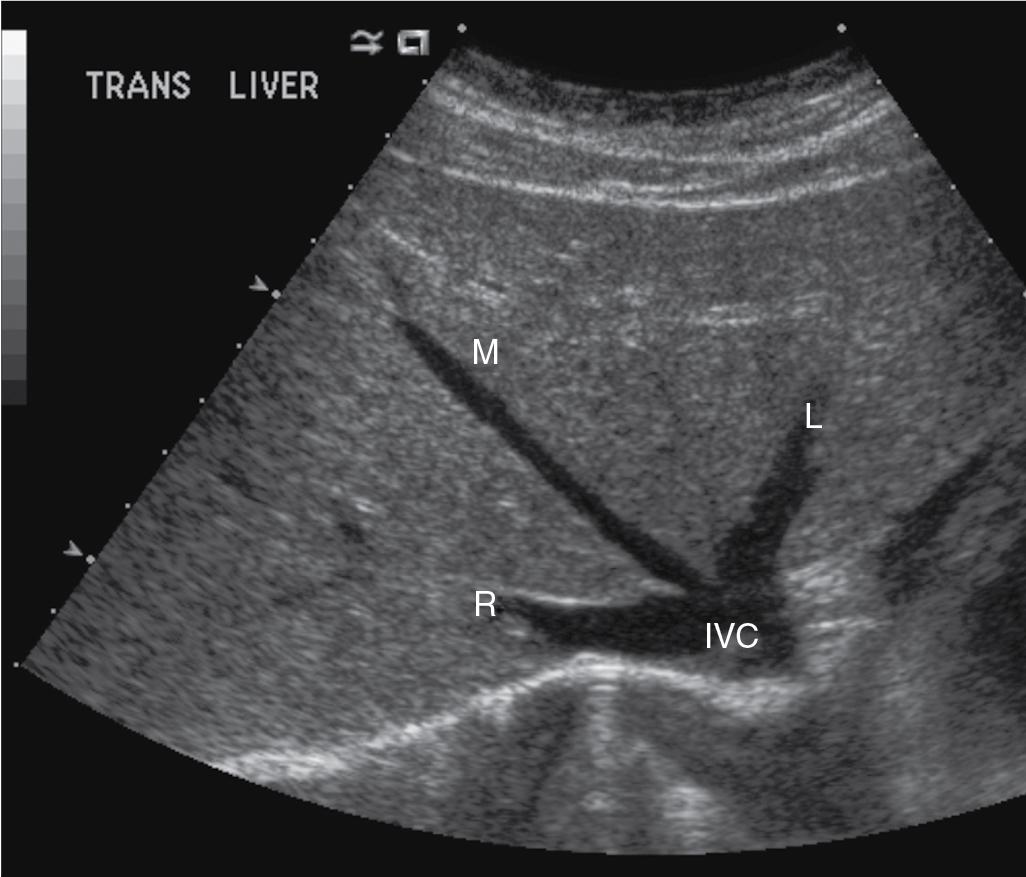
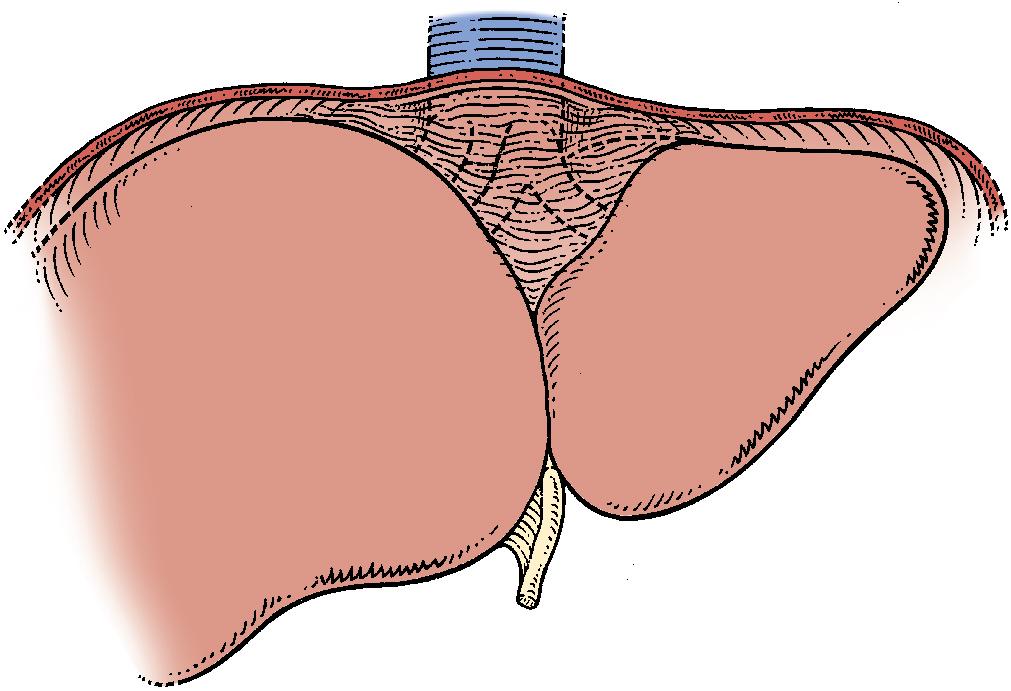
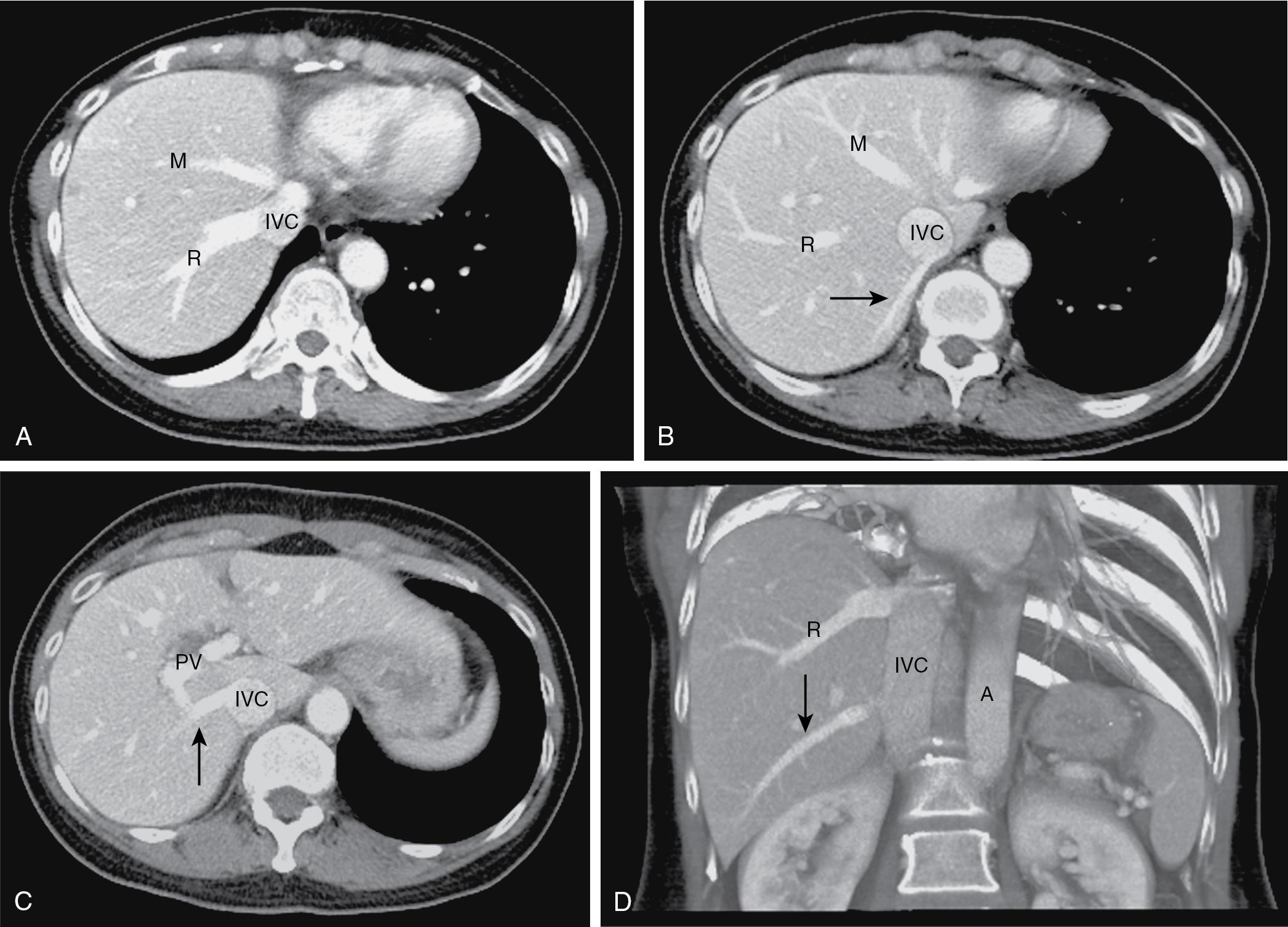
This classic description of the anatomy of the liver is sufficient for gross appreciation and for mobilization of the liver to allow access for repair of injuries, liver transplantation, or the placement of probes onto or into the liver substance. Hidden beneath this external gross appearance is a detailed internal anatomy, an understanding of which is essential to the performance of precise hepatectomy. This internal anatomy has been called the functional anatomy of the liver.
The internal architecture of the liver is composed of a series of segments that combine to form sectors separated by scissurae that contain the hepatic veins ( Fig. 2.5 ), as described by Couinaud (1957). Together or separately, these constitute the visible lobes described previously. The internal structure has been clarified by the publications of McIndoe and Counseller (1927), Ton That Tung (1939, 1979), , Hjörtsjö (1931), Healey and Schroy (1953), Goldsmith and Woodburne (1957), Couinaud (1957), and Bismuth and colleagues (1982). Essentially, the three main hepatic veins within the scissurae divide the liver into four sectors, each of which receives a portal pedicle. The main portal scissura contains the middle hepatic vein and progresses from the middle of the gallbladder bed anteriorly to the left of the vena cava posteriorly. The right and left parts of the liver, demarcated by the main portal scissura, are independent in terms of portal and arterial vascularization and biliary drainage ( Fig. 2.6 ). These right and left livers are themselves divided into two by the remaining portal scissurae. These four subdivisions are referred to as segments in the description of Goldsmith and Woodburne (1957), but in Couinaud’s nomenclature (1957), they are termed sectors .
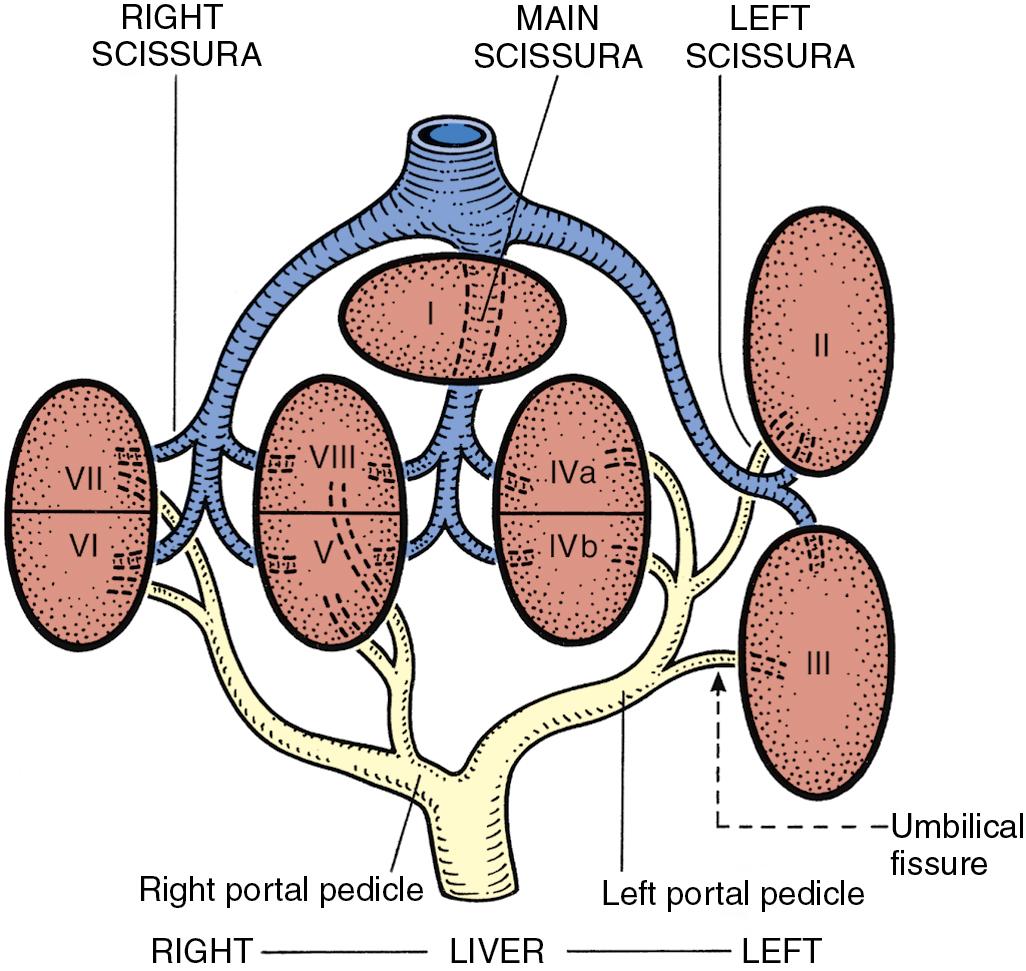
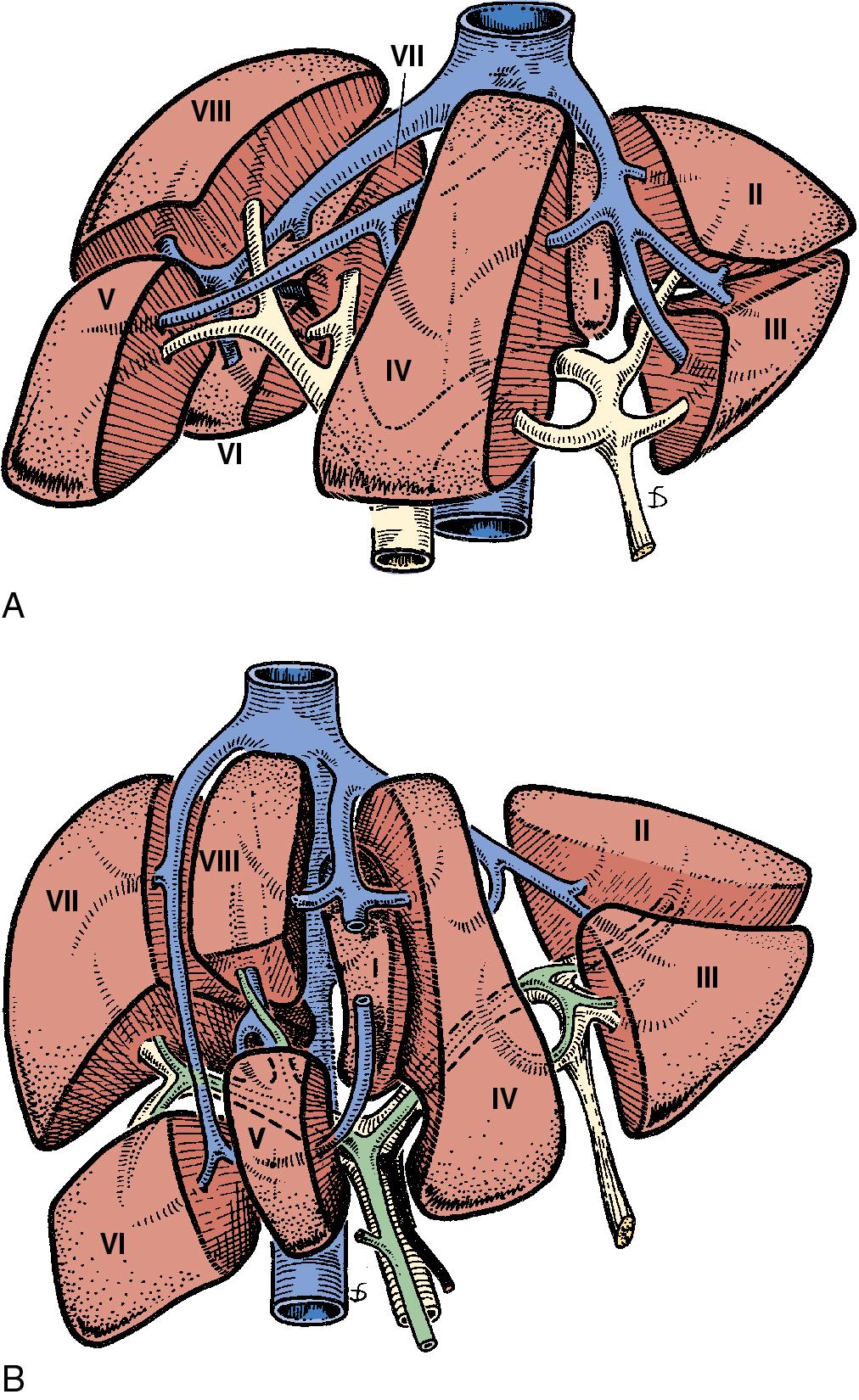
The right portal scissura separates the right liver into two sectors: anteromedial (anterior) and posterolateral (posterior). With the body supine, this scissura is almost in the frontal plane. The right hepatic vein runs within the right scissura. The left portal scissura divides the left liver into two sectors, but the left portal scissura is not within the umbilical fissure because this fissure is not a portal scissura, and instead it contains a portal pedicle. The left portal scissura is located posterior to the ligamentum teres and within the left liver, along the course of the left hepatic vein.
Although the description by Couinaud has been used widely, it is being replaced by an alternative terminology suggested by a committee of the International Hepato-Pancreatico-Biliary Association in 2000. The main difference is that, in the alternative terminology, Couinaud’s sectors are now referred to as sections ( Table 2.1 ; see Chapter 103 B for differences in the terminology of the various hepatic resections). Also, note that the left medial section, in the terminology of Strasberg (2005), is composed of one segment (i.e., segment IV).
| ANATOMIC TERM | COUINAUD SEGMENTS | SURGICAL RESECTION |
|---|---|---|
| Right hemiliver/right liver | 5–8 | Right hepatectomy |
| Left hemiliver/left liver | 2–4 | Left hepatectomy |
| Right anterior section | 5, 8 | Right anterior sectionectomy |
| Right posterior section | 6, 7 | Right posterior sectionectomy |
| Left medial section | 4 |
|
| Left lateral section | 2, 3 |
|
| 4, 5, 6, 7, 8 |
|
|
| 2, 3, 4, 5, 8 |
|
At the hilum of the liver, the right portal triad pursues a short course of approximately 1 to 1.5 cm before entering the substance of the right liver ( Fig. 2.7 ). In some cases, the right anterior and posterior pedicles arise independently, and their origins may be separated by 2 cm. In some cases, it appears as if the left portal vein arises from the right anterior branch (see Fig. 2.40 ). On the left side, however, the portal triad crosses over approximately 3 to 4 cm beneath segment IV (formerly called the quadrate lobe ), embraced in a peritoneal sheath at the upper end of the gastrohepatic ligament and separated from the undersurface of segment IV by connective tissue (hilar plate). This prolongation of the left portal pedicle turns anteriorly and caudally within the umbilical fissure, giving branches of supply to segment II first and then segment III and recurrent branches (“feedback vessels”) to segment IV ( Fig. 2.8 ; see Fig. 2.6 ). Beneath segment IV, the pedicle is composed of the left branch of the portal vein and the left hepatic duct, but it is joined at the base of the umbilical fissure by the left branch of the hepatic artery.
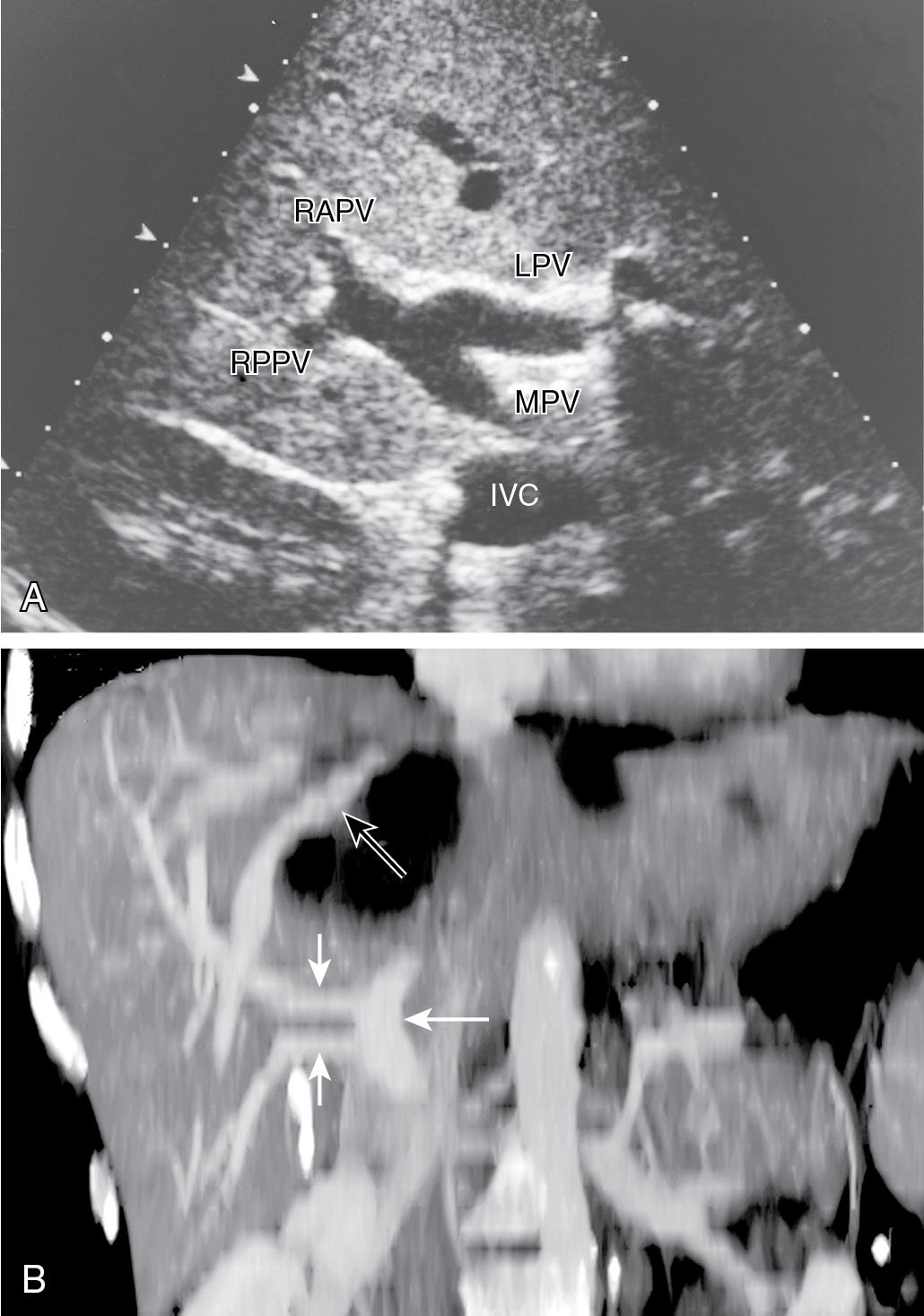
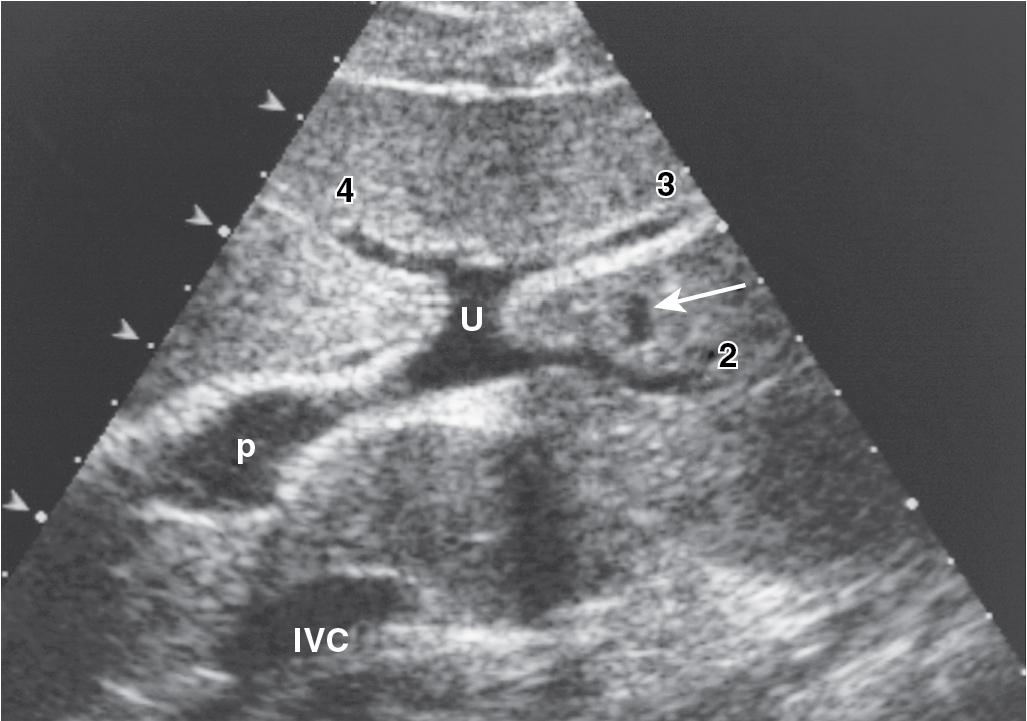
The branching of the portal pedicle at the hilum ( Fig. 2.9 ), the distribution of the branches to the caudate lobe (segment I) on the right and left sides, and the distribution to the segments of the right (segments V through VIII) and left (segments II through IV) hemiliver follow a remarkably symmetric pattern and, as described by Scheele (1994), allow for the separation of segment IV into segment IVa superiorly and segment IVb inferiorly (see Fig. 2.6 ). This arrangement of subsegments mimics the distribution to segments V and VIII on the right side. The umbilical vein provides drainage of at least parts of segment IVb after ligation of the middle hepatic vein, and it is important in the performance of segmental resections.
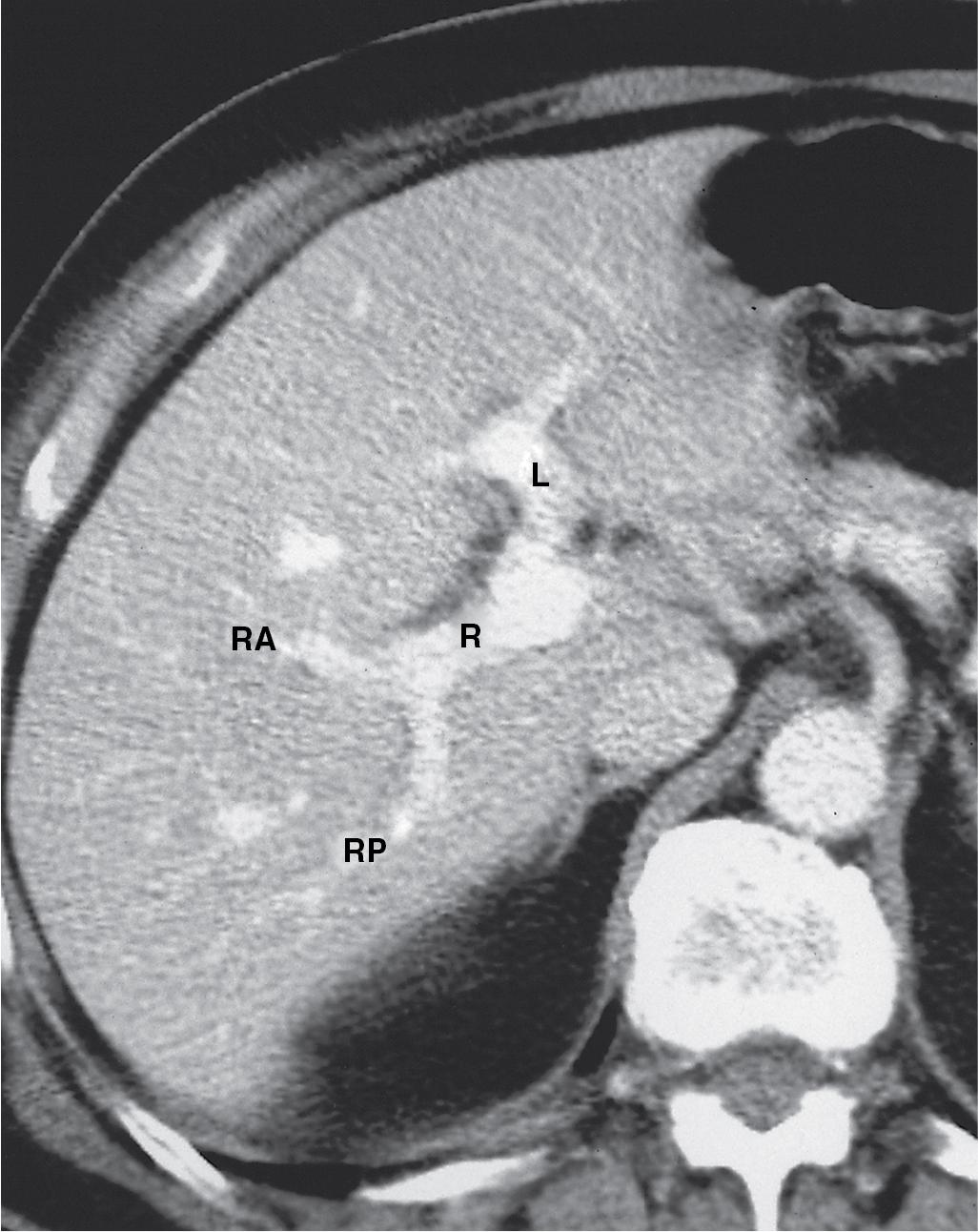
The caudate or segment I is the dorsal portion of the liver lying posteriorly; it embraces the retrohepatic IVC ( Figs. 2.10 and 2.11 ). The caudate is intimately related to several major vascular structures. On the left, the caudate lies between the IVC posteriorly and the left portal triad inferiorly and the IVC and the middle and left hepatic veins superiorly ( Fig. 2.12 ). The portion of the caudate on the right varies but is usually quite small. The anterior surface within the parenchyma is covered by the posterior surface of segment IV, the limit being an oblique plane slanting from the left portal vein to the left hepatic vein. Thus there is a caudate lobe with a constantly present left portion and a right portion of variable size. This portion of the caudate on the right is adjacent to the recently described segment IX, which lies between it and segment XIII. The authors find segment IX of little practical clinical significance.
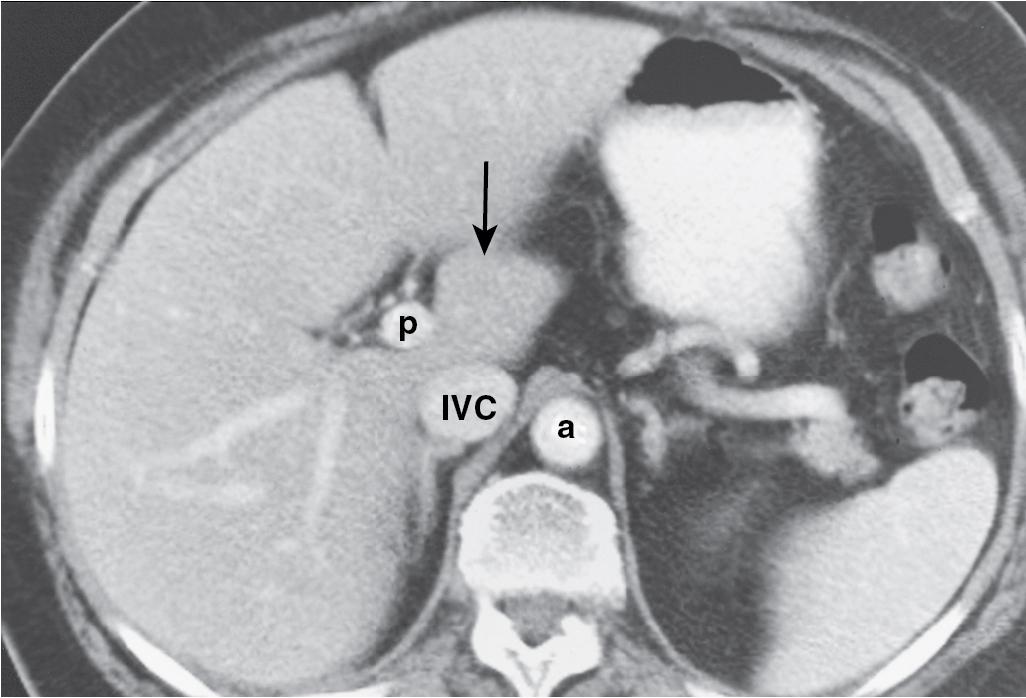
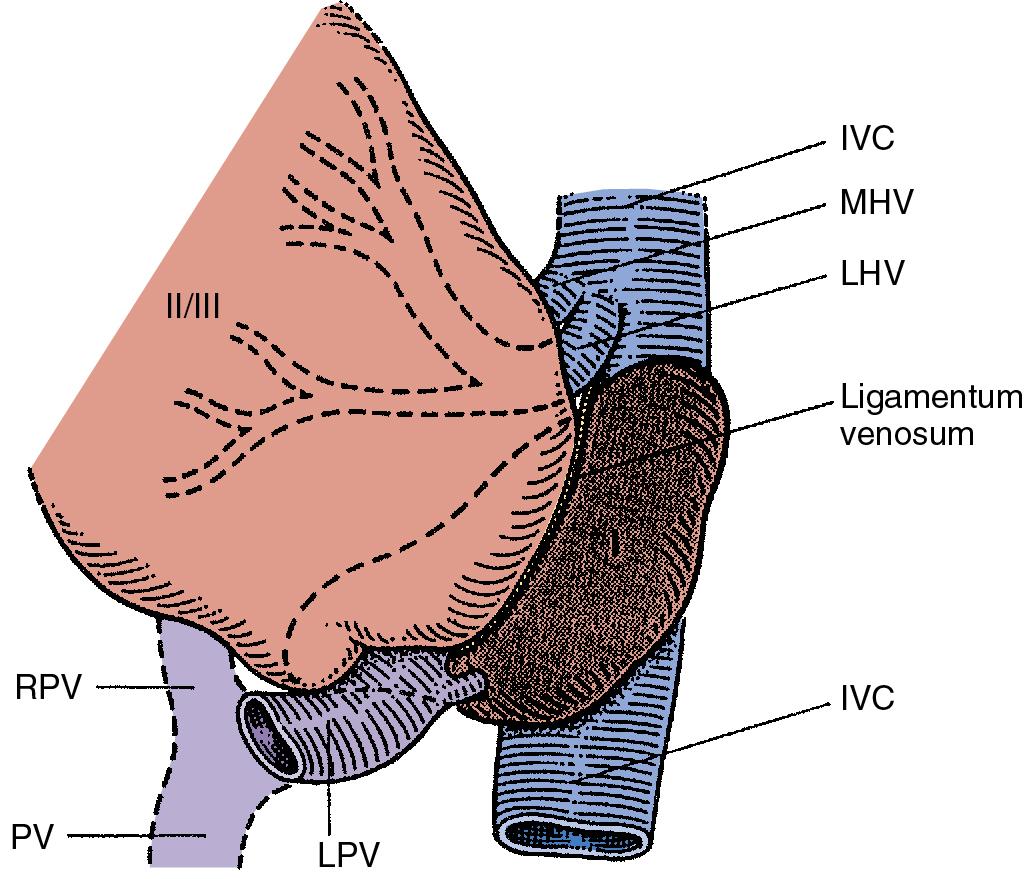
The caudate is supplied by blood vessels and drained by biliary tributaries from the right and left portal triad. Small vessels from the portal vein and tributaries joining the biliary ducts also are found. The right portion of the caudate, including the caudate process, predominantly receives portal venous blood from the right portal vein or from the bifurcation of the main portal vein, whereas on the left side, the portal supply arises from the left branch of the portal vein almost exclusively. Similarly, the arterial supply and biliary drainage of the right portion is most commonly associated with the right posterior sectional vessels and the left portion with the left main vessels. The hepatic venous drainage of the caudate is unique in that it is the only hepatic segment that drains directly into the IVC. These veins can sometimes drain into the posterior aspect of the vena cava if a significant retrocaval caudate component is present.
In the most common circumstance, the posterior edge of the caudate lobe on the left has a fibrous component, which fans out and attaches lightly to the crural area of the diaphragm, but it extends posteriorly, behind the vena cava, to link with a similar component of fibrous tissue (called the venal caval ligament) that protrudes from the posterior surface of segment VII and embraces the vena cava (see Figs. 2.1 C and 2.11 ). In up to 50% of patients, this ligament is replaced by hepatic tissue, in whole or in part, and the caudate may completely encircle the IVC and may contact segment VII on the right side; a significant retrocaval component may prevent a left-sided approach to the caudate veins. The caudal margin of the caudate lobe can have a papillary projection that occasionally may attach to the rest of the lobe via a narrow connection. It is bulky in 27% of cases and can be mistaken for an enlarged lymph node on computed tomography (CT) scan ( Fig. 2.13 ).
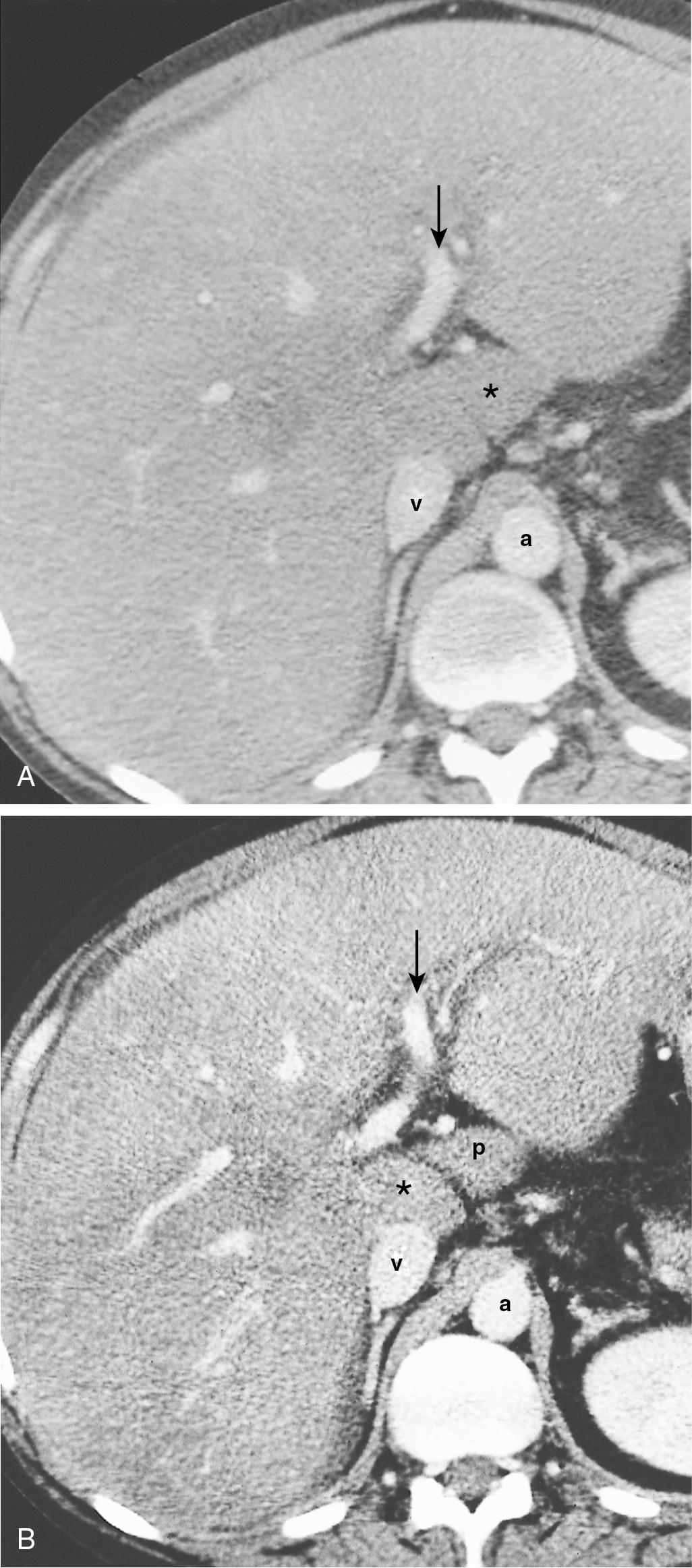
To summarize:
The liver is divided into two hemilivers by the main hepatic scissura, where the middle hepatic vein runs.
The left liver is divided into two sections. The Brisbane 2000 nomenclature describes the left lateral section (segments II and III) and the left medial section (segment IV).
The right liver is divided into an anterior section (segments V and VIII) and posterior section (segments VI and VII).
Segment I, the caudate lobe, lies posteriorly and embraces the IVC, its intraparenchymal anterior surface abutting the posterior surface of segment IV and merging with segments VI and VII on the right ( Fig. 2.14 ; see Fig. 2.11 ).
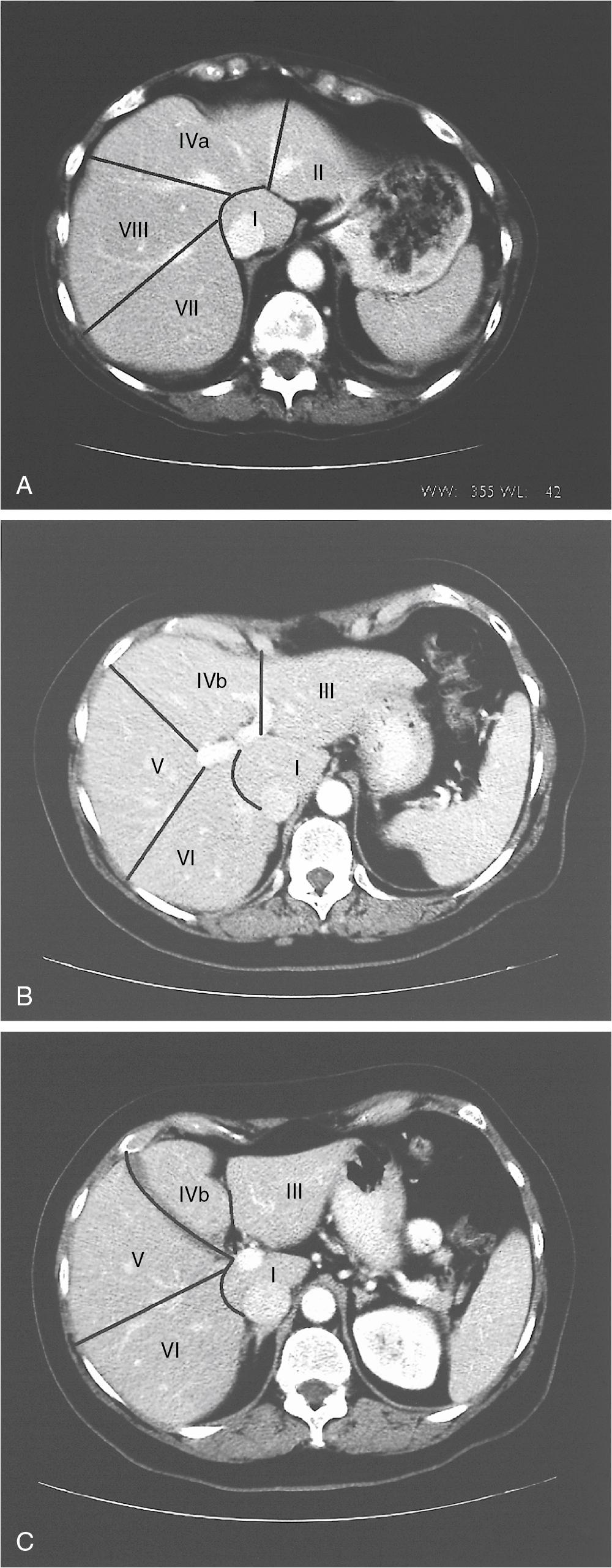
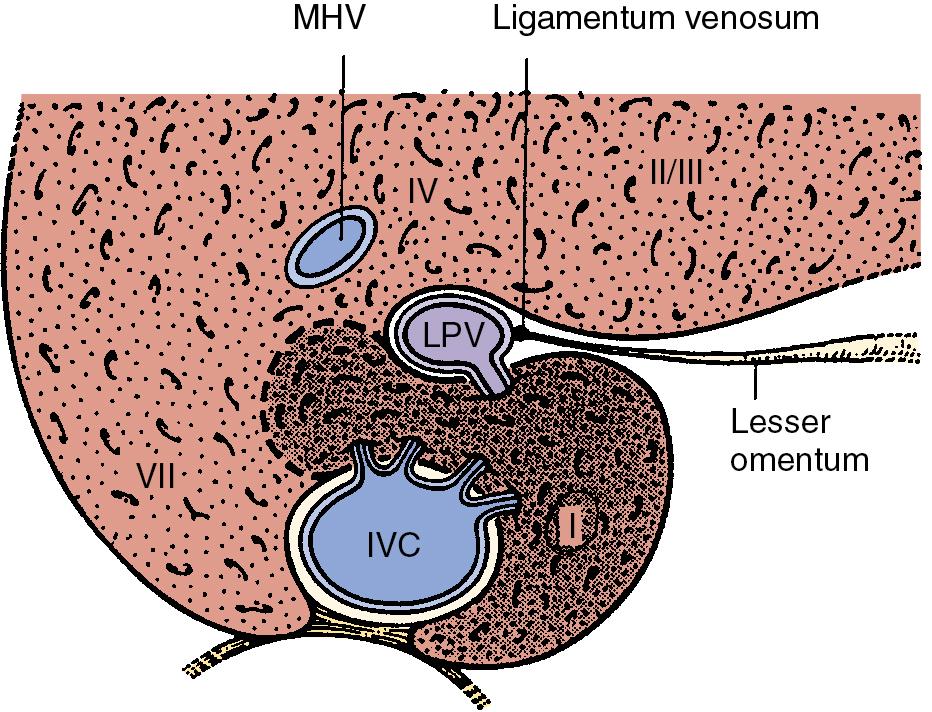
Further details of segmental anatomy important in sectional or segmental resection are described in Chapters 101 and 102 .
All methods for precise partial hepatectomy depend on control of the inflow vasculature and draining bile ducts and the outflow hepatic veins of the portion of liver to be excised, which may be a segment, a subsegment, or an entire lobe. The remnant remaining after partial hepatectomy must be provided with an excellent portal venous inflow, hepatic arterial supply, and biliary drainage and unimpeded hepatic venous outflow. The classification of the various partial hepatic resection procedures, incisions and exposure, necessary mobilization of the liver, and the methods of control of the structures within the portal triads and of the hepatic veins are described in detail in Chapters 101 and 102 .
Biliary exposure and precise dissection are the most important steps in any biliary operative procedure. A thorough understanding of biliary anatomy is necessary.
The right and left livers are drained by the right and the left hepatic ducts, whereas the caudate lobe is drained by several ducts that join both the right and left hepatic ducts. The intrahepatic ducts are tributaries of the corresponding hepatic ducts, which form part of the major portal triads that penetrate the liver, invaginating Glisson capsule at the hilum. Bile ducts usually are located above the corresponding portal branches, whereas hepatic arterial branches are situated inferiorly to the veins. Each branch of the intrahepatic portal veins corresponds to bile duct tributaries that join to form the right and left hepatic ductal systems, converging at the liver hilum to constitute the common hepatic duct. The umbilical fissure divides the left liver, passing between segments III and IV, which may be bridged by a tongue of liver tissue. The ligamentum teres passes through the umbilical fissure to join the left branch of the portal vein.
The left hepatic duct drains the three segments—II, III, and IV—that constitute the left liver ( Fig. 2.15 ). The duct that drains segment III is located slightly behind the left horn of the umbilical recess. It is joined by the tributary from segment IVb to form the left duct, which is similarly joined by the duct of segment II and the duct of segment IVa, where the left branch of the portal vein turns forward and caudally. The left hepatic duct traverses beneath the left liver at the base of segment IV, just above and behind the left branch of the portal vein; it crosses the anterior edge of that vein and joins the right hepatic duct to constitute the hepatic ductal confluence. In its transverse portion, it receives a few small branches from segment IV.
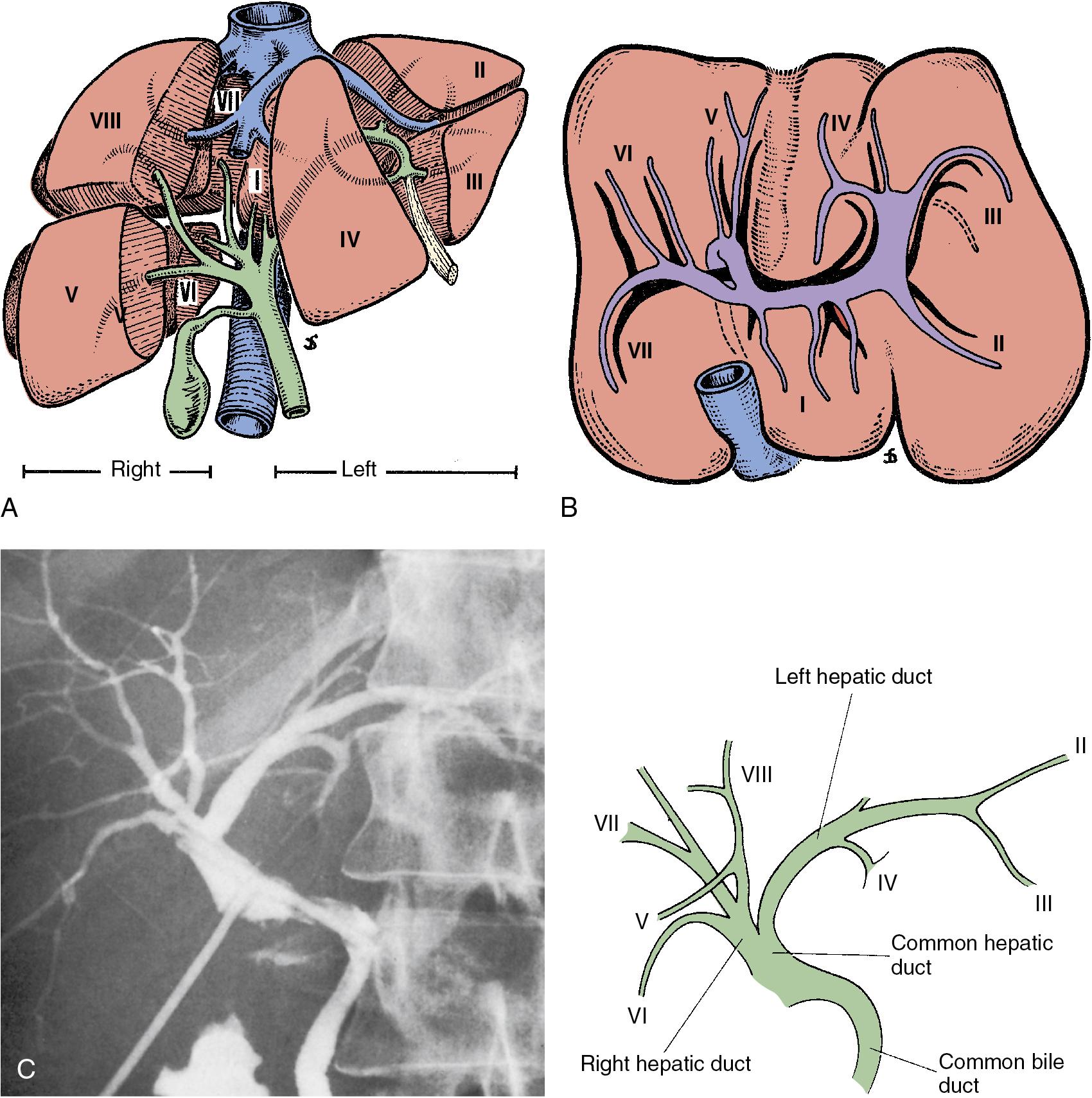
The right hepatic duct drains segments V, VI, VII, and VIII and arises from the junction of two main sectional duct tributaries. The posterior or lateral duct and the anterior or medial duct are each accompanied by a corresponding vein and artery. The right posterior sectional duct has an almost horizontal course and constitutes the confluence of the ducts of segments VI and VII ( Fig. 2.16 ). The duct then runs to join the right anterior sectional duct, as it descends in a vertical manner. The right anterior sectional duct is formed by the confluence of the ducts draining segments V and VIII. Its main trunk is located to the left of the right anterior sectional branch of the portal vein, which pursues an ascending course. The junction of these two main right biliary channels usually occurs above the right branch of the portal vein. The right hepatic duct is short and joins the left hepatic duct to constitute the confluence lying in front of the right portal vein and forming the common hepatic duct.
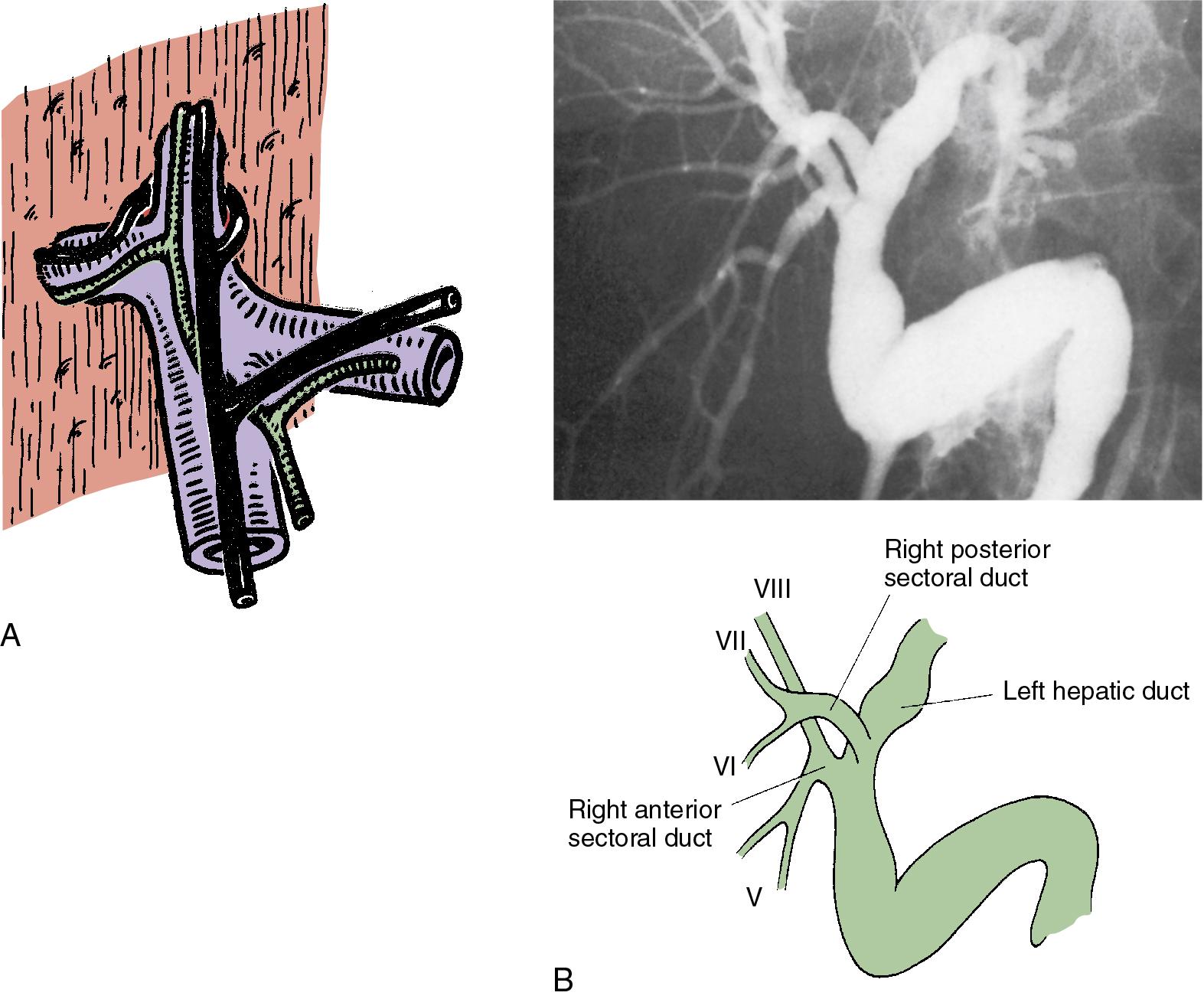
The caudate lobe (segment I) has its own biliary drainage. The caudate lobe is divided into right and left portions and a caudate process. In 44% of individuals, three separate ducts drain these three parts of the lobe, whereas in another 26%, a common duct lies between the right portion of the caudate lobe proper and the caudate process and an independent duct that drains the left part of the caudate lobe. The site of drainage of these ducts varies. In 78% of cases, drainage of the caudate lobe is into the right and left hepatic ducts, but in 15%, drainage is by the left hepatic ductal system only. In about 7%, the drainage is into the right hepatic system.
The extrahepatic bile ducts are represented by the extrahepatic segments of the right and left hepatic ducts, joining to form the biliary confluence and the main biliary channel draining to the duodenum ( Figs. 2.17 and 2.18 ). The confluence of the right and left hepatic ducts occurs at the right of the hilar fissure of the liver, anterior to the portal venous bifurcation and overlying the origin of the right branch of the portal vein. The extrahepatic segment of the right duct is short, but the left duct has a much longer extrahepatic course. The biliary confluence is separated from the posterior aspect of segment IVB of the liver by the hilar plate, which is the fusion of connective tissue enclosing the biliary and vascular elements with the Glisson capsule ( Fig. 2.19 ). Because of the absence of any major vascular interposition, it is possible to open the connective tissue constituting the hilar plate at the inferior border of segment IV and, by elevating it, to display the biliary confluence and left hepatic duct ( Fig. 2.20 ).
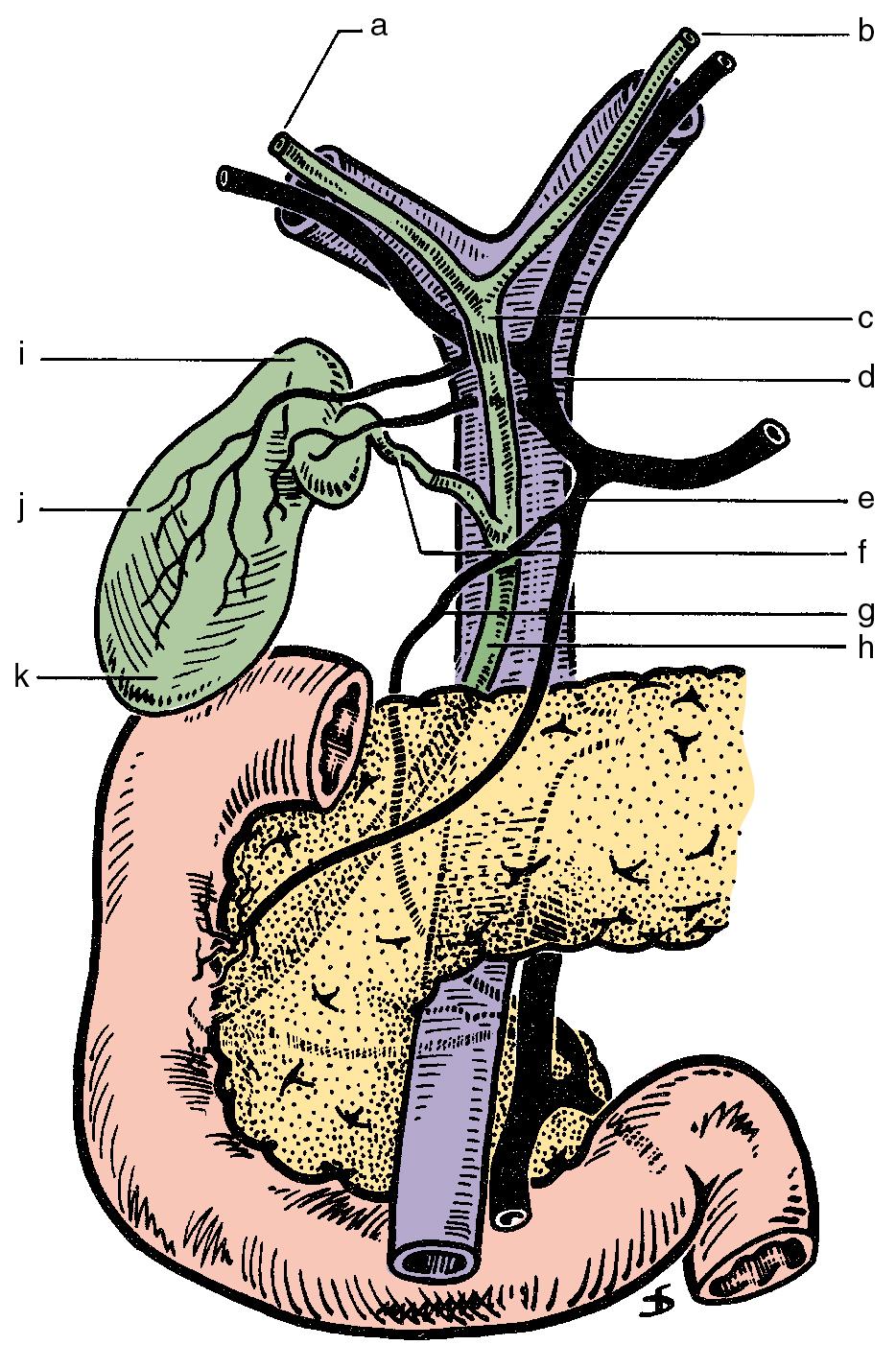
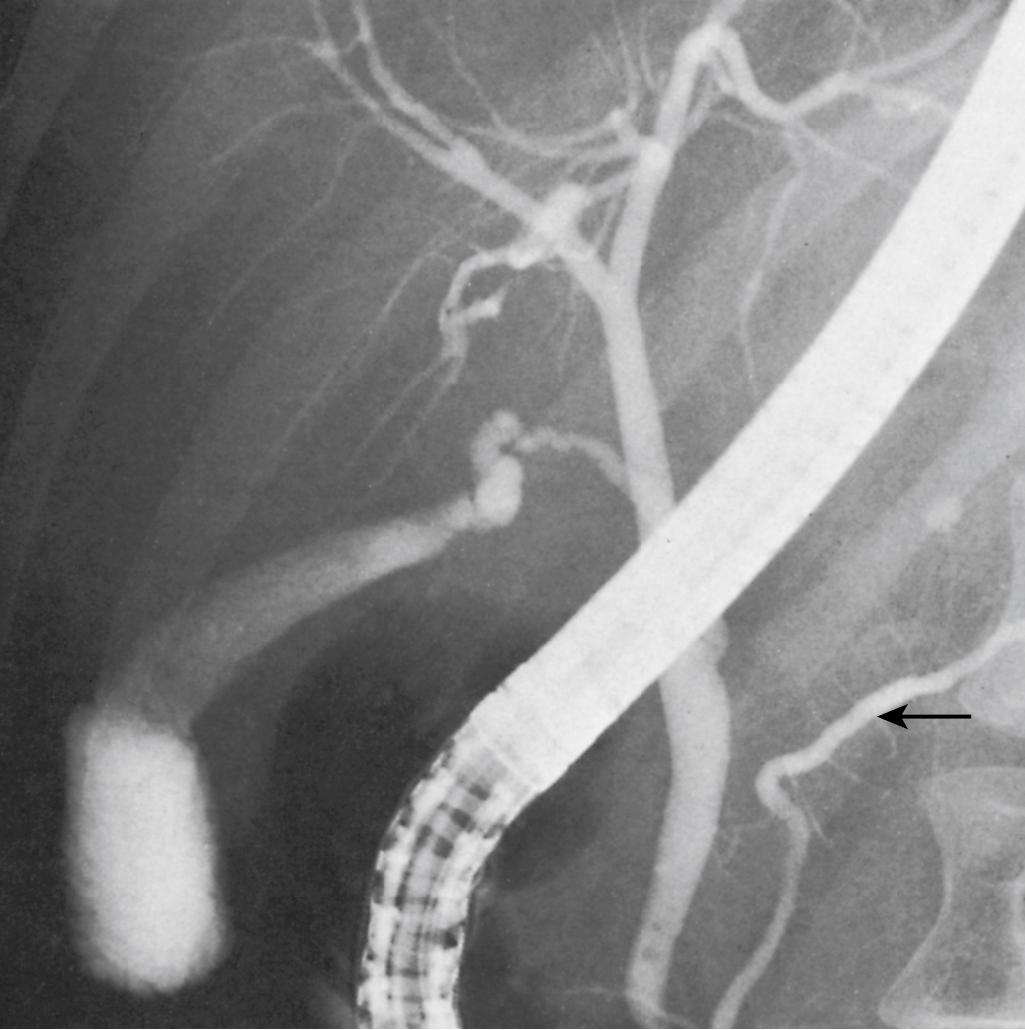
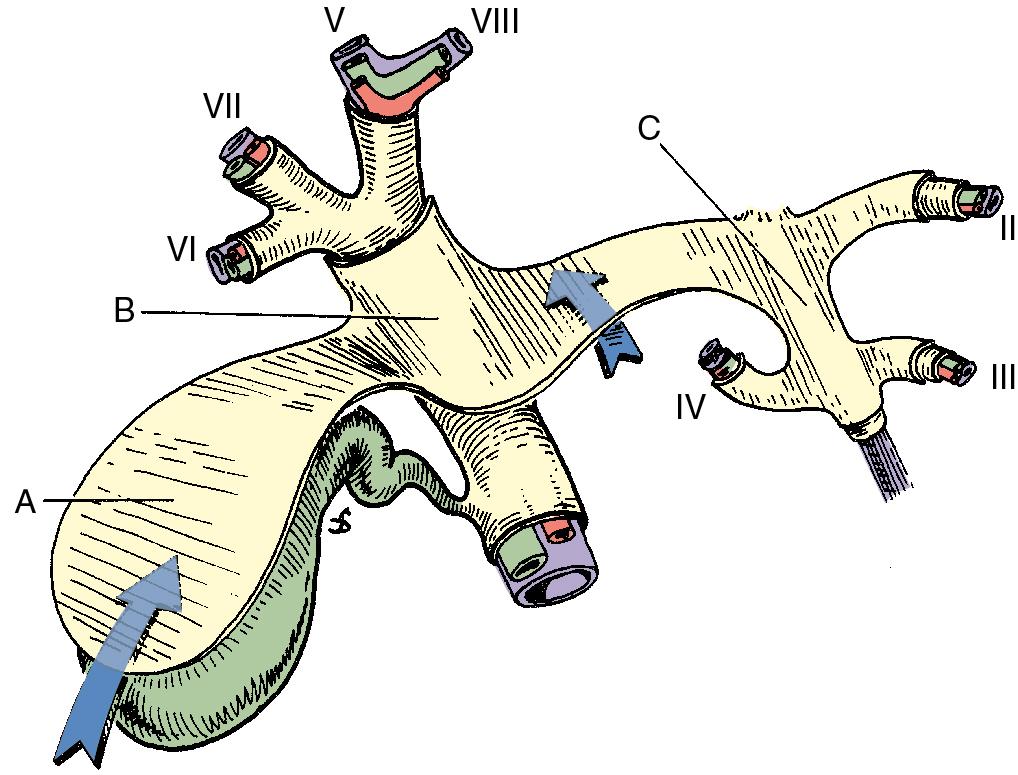
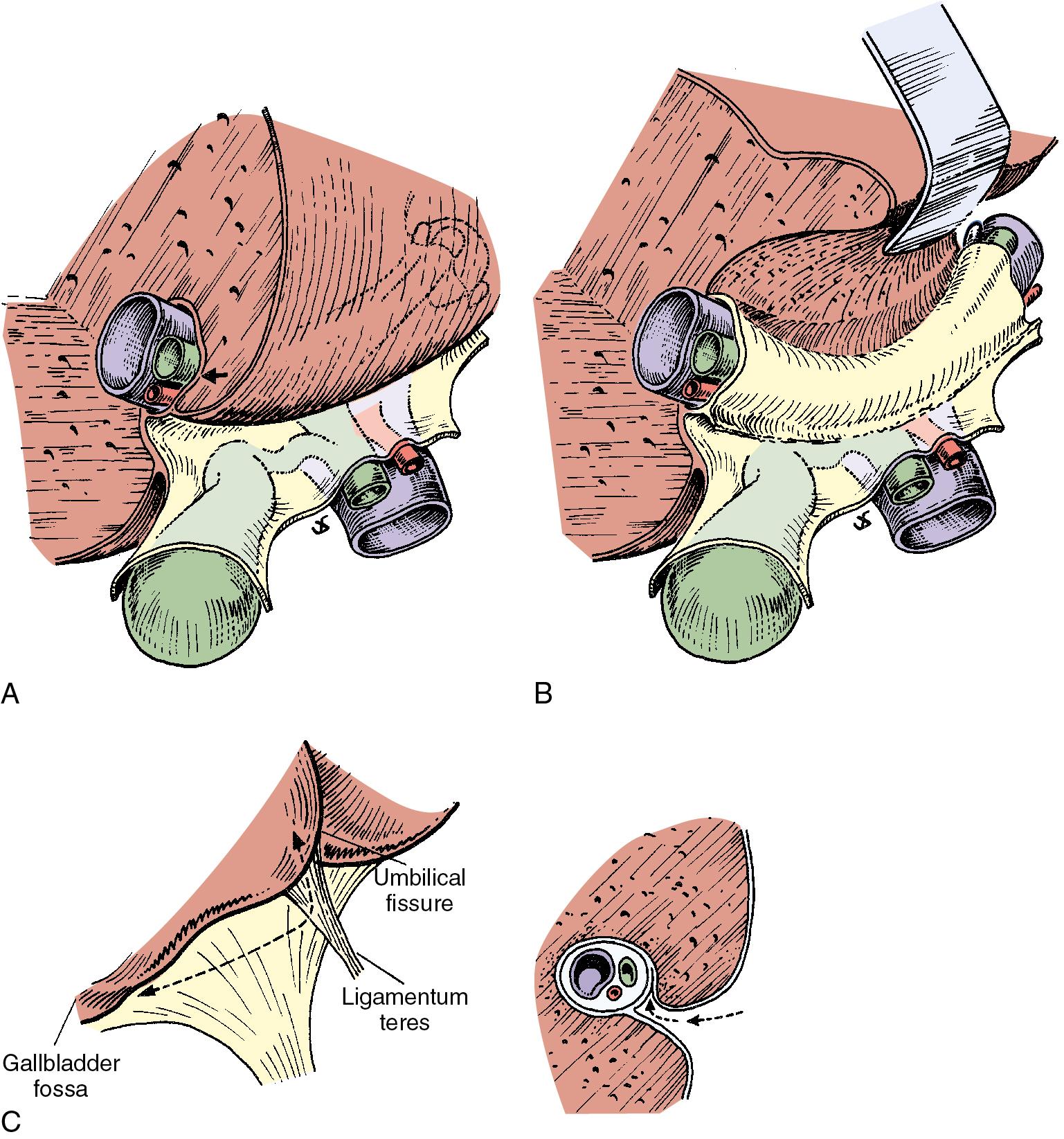
Become a Clinical Tree membership for Full access and enjoy Unlimited articles
If you are a member. Log in here